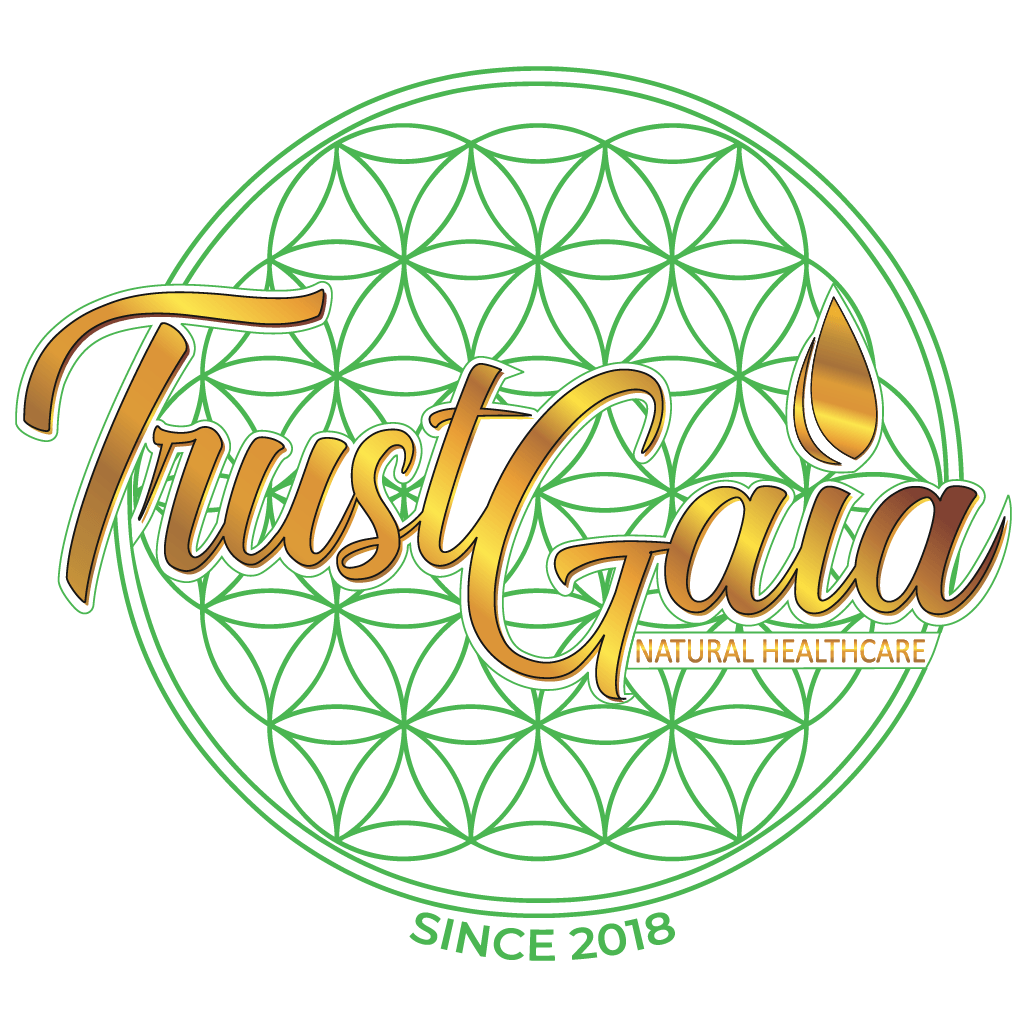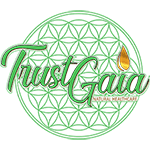Everything to know about Homeopathy!
(Nutrition)

Homeopathic medicines are obtained from a precise and controlled process of successive homeopathic
In homeopathic medicine this is called Law of Similars, or like cures like.. substance be significantly diluted in a solution to create a homeopathic
Homeopathy’s roots emerge from the findings, teachings and writings of Dr. Samuel Hahnemann (1755-1843). Hahnemann graduated from medical school in 1779 and started his own medical practice. He soon began his first homeopathic experiments in 1790, as a result of his disillusionment with such common medical practices of the day as purging, bloodletting, and the use of toxic chemicals. At one point, he gave up his own daily practice to begin working as a chemist while translating medical texts. It was when Hahnemann began working on a project to translate William Cullen’s Materia Medica into German that he began his quest for a better way of providing healthcare using the principles of “Similars.” While working on this project, he became fascinated with a species of South American tree-bark (cinchona) which was being used to treat malaria-induced fever.
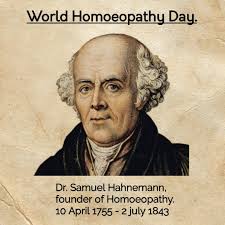
Hahnemann ingested the bark and discovered that it caused symptoms similar to malaria. He continued his research into “cures” and the idea of “similar suffering,” and began compiling his findings. Similia similibus curentur, the Latin phrase meaning “let likes be cured by likes,” is the primary principle of homeopathy. A homeopath searches for a substance that produces in a healthy person those same symptoms a patient experiences.
The First U.S. Homeopathic School
Students of Hahnemann founded the first homeopathic medical school in the United States in the late 1800’s. It gained recognition because of its success in treating the many disease epidemics rampant at the time — including scarlet fever, typhoid, cholera and yellow fever.
The school’s method of treatment became very popular in the early 1900’s. At that time, there were 22 homeopathic medical schools, 100 homeopathic hospitals and over 1,000 homeopathic pharmacies. Boston University, Stanford University and New York Medical College were among those educational institutions that were teaching homeopathy. However, it was not long after this period of time (in the early 1920’s) that many of the schools closed — mostly due to the decline of homeopathy’s popularity which was greatly effected by the American Medical Association. This was also around the time when modern drug companies began releasing drugs that were easy to administer to patients, a trend that also contributed to the decline of homeopathy.
The Homeopathic Resurgence
Although the United States experienced a dwindling interest in homeopathy in the 20th century, other nations, including countries in Europe and Asia, were experiencing a steady growth of homeopathic teachings and interest.
Today, nearly all French pharmacies sell homeopathic remedies and medicines; and homeopathy has a particularly strong following in Russia, India, Switzerland, Mexico, Germany, Netherlands, Italy, England, and South America.
Homeopathy is also rising again in the United States. This resurgence has been documented by the National Center for Homeopathy in Virginia, which stated that Americans spent 230 million dollars on homeopathic remedies in 1996. It has also been said that sales are rising rapidly at about 12 – 15% each year.
Basic facts of unitary homeopathy
The founder of homeopathy was Dr. Samuel Hahnemann (1755-1843). Based on his observations, he formulated the so-called PRINCIPLE OF SIMILARITY, which states that a given substance can cure in a diseased person the symptoms that it produces or causes in a healthy person.

Homeopathy is a well-described, scientifically based system of approaching health and disease. “Scientific” because the insights are based on reproducible experiments. “Well-described” because from these observations a number of precise basic fundamental rules became evident, first among them the “similarity principle.”
Hahnemann published his ideas and experiences in a book called the Organon. The first edition appeared in 1810 and he wrote the last edition (which appeared posthumously) in 1842. As was the custom in those days, he gave numbers to each paragraph in which he explained his different concepts. What is so striking is that Hahnemann’s fundamental concepts still hold true today nearly 200 years later. This is not to say there has been no progress in homeopathic thought but rather to the fact that subsequent investigators have been able to confirm and reconfirm these basic principles. Every serious study of homeopathy even today begins with a study of the Organon.
What is unitary homeopathy?
Although homeopathy is only 200 years old, it is now practiced in a variety of ways, most of which bear little resemblance to what Hahnemann taught. In the public mind the word “homeopathy” has become so vague that for some it means only an “alternative medicine” and for others a combination of homeopathic medicines that you buy in the health food store, one mixture for allergies, another for headache, etc.
Unitary homeopathy (often called classical homeopathy) must be differentiated from all other so-called forms of homeopathy. The hallmarks of unitary homeopathy are:
- A thorough interview to discover the totality of signs and symptoms. This total picture is our most important guide to the medicine. By “signs” we mean that which can be objectively assessed by the physician. By “symptoms” we mean what the patient himself feels subjectively.
- How a homeopathic medicine acts is found out by administering it to healthy volunteers and recording the symptoms the volunteers report. By repeating these trials often, we get a complete profile of the medicine. Such trials are known as “provings.” All homeopathic medicines have been “proved” on healthy volunteers to learn how they act.
- The total picture of the patient should be as similar as possible to the drug picture of the selected remedy. This is known as similia similibus curentur (let similars be cured by similars). The medicine should match the so-called characteristic (striking, unusual, and uncommon) symptoms of the patient as closely as possible.
- Since a homeopathic remedy corresponds only superficially to a particular disease, it must be customized to match the individual with that disease, a process we call “individualization.” The very same illness in another patient will most often be cured with an entirely different remedy – thus we could have two different remedies that cure two different patients with the same disease.
- According to the homeopathic way of thinking, a disease originates from a disturbance of the patient’s “vital force.” This is the life force energy that sustains life. As the origin of disease occurs on this energetic level, the homeopathic remedy has also to be on this level.
- Such an energetic medicine is made by diluting the remedy and succussing (shaking) it. All homeopathic medicines are “potentized”, i.e., diluted and succeeded. This method of preparation imparts considerable energy to each substance.
- “Unitary” homeopathy means that only one remedy is given at a time because only one remedy can correspond perfectly to the total picture of the patient. A prescription that does not aim for this totality is not homeopathic.
Taking the homeopathic remedy
Homeopathic medicines can be administered in drops, grains (approx. 3mm in diameter) or globules (approx. 1mm in diameter). The medicine is taken once, meaning that a given number of drops, grains or globules are taken on a single occasion and only once. Sometimes the medicine is repeated, e.g., two times a day or every three hours, etc.
You must follow the instructions carefully. Usually the remedy is repeated until a reaction occurs. When a dose is taken can be important. Usually you will be instructed to take it before a certain meal, usually breakfast. It is best is to eat no food, alcohol, tea or coffee before taking the remedy. Also do not brush your teeth at that time. After a couple of minutes the remedy is absorbed and you can eat breakfast.
How to take the medicine
Follow the instructions of your physician. Drops can go directly into your mouth or be dissolved in water and then administered in teaspoonful doses. Grains and globules can be placed under the tongue. It is better not to touch the remedies, so use the cap of the vial or tube. Store your homeopathic remedy in a place where there is no sunlight or strong odors and where it is neither too hot nor cold. This way it will remain active for a long time.
Homeopathic remedies are sufficiently diluted so that no poisoning will occur if a child should accidentally ingest a tube of granules, though it is possible that he might prove the medicine so you might have to consult your homeopathic physician.
After you have taken your medication it is important to observe yourself. Be sure to keep the follow up appointment which will be two to eight weeks after the initial appointment. Typically in the treatment of a chronic illness the follow up will be one to two months later. The better the treatment goes the longer will be the intervals between appointments until you are eventually cured. Cure is not simply the disappearance of one or several complaints but an optimally stable equilibrium physically as well as well as psychologically.
What is Homeopathy?
Homeopathy is a system of natural medicine introduced and developed by a German physician, Samuel Hahnemann, at the end of the 18th century. Recognizing that the whole person-mind, body, spirit-is affected when there is illness, homeopathy seeks to treat that whole person. The focus is not the diseased part or the sickness, rather the totality of the individual. Homeopathic medicines, or ‘remedies’, stimulate the body’s self-regulating mechanisms to initiate the healing process.
Homeopathic Philosophy
When a person becomes ill, it is the whole that is sick: body, mind, spirit. The body manifests symptoms of illness but it is not the origin of the illness. Upon death, the physical body remains, but it is no longer curable. That which is curable, the ‘vital force’, has left the body. The origin of illness lies in an imbalance of the vital force. The symptoms expressed by the body, mind, and spirit are the manifestation of that imbalance. By matching the symptoms of illness with the appropriate homeopathic remedy, the vital force returns to balance. The symptoms disappear as the person heals themselves.
You can buy Food Supplement Herbs at TrustGaia
Homeopathic Principles
Homeopathy has 4 principles that are its foundation. They remain unchanged over the last 200 years as their truth is demonstrated through successful treatment of the sick.
The cornerstone principle is Similia Similbus Curentur, “Let likes cure likes” Homeopathy actually derives its name from the Greek, homoeo=’similar’, and pathos=’suffering’. Through research and practice Hahnemann verified cure through the use of similars. A substance that can produce disease in a healthy person is used to elicit a healing response in someone presenting with a similar disease. Each person shows symptoms of the body/mind/spirit when they are sick. Some of these symptoms are common to that sickness, others are characteristic of that person in their sickness. The homeopathic practitioner matches the symptom picture of the homeopathic remedy to the symptom picture of the person, with particular attention paid to those symptoms which are unique to the individual.
The second principle of homeopathy is The Single Remedy. Only one homeopathic remedy is given at any one time. It would be difficult, if not impossible, to ascertain the action of multiple homeopathic remedies given all at once. The response of the vital force would be unpredictable and ambiguous. Though Hahnemann experimented with this approach he abandoned it as unsatisfactory.
The third principle of homeopathy is The Minimum Dose. This refers to the infinitesimal doses of medicine given as well as to the repetition of dose only when necessary. Drugs given to individuals in material doses frequently cause side effects or adverse reactions. To curtail this problem, the homeopath administers the smallest possible dose so as to maximize beneficial effects and minimize side effects. Repetition of dose is determined by the individual’s response to the remedy. Unnecessary repetition may lessen the response, even to the correct remedy. In homeopathy, less is better.
The fourth principle of homeopathy is The Potentized Remedy. Homeopathic remedies, though made from natural substances such as plants, minerals, animals, etc., are manufactured unlike any other medicine. Through a process of serial dilution a very dilute extract is made. With every step of dilution the remedy is vigorously shaken -succussed. This process of succussion is designed to arouse the dynamic nature of the medicine. To affect the vital force, a similarly energetic, homeopathic remedy must be employed.
Glossary terms
- Dynamis – life energy, vital force
- Potentized – usually refers to a substance prepared according to homeopathic pharmaceutical standards. This means that it has gone through serial dilution and succussion
- Remedy – medicine, as in homeopathic remedy
- Succussion – the process of forcefully striking a homeopathic remedy against a firm surface
- Vital force – the energy that maintains life in the individual (see Organon aphorisms 9-12)
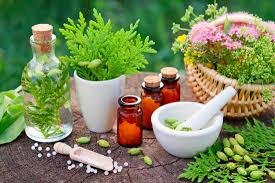
1. What are the physical, mental and emotional aspects of homeopathy?
Homeopathy is based on the philosophy that the body, mind and emotions are not really separate and distinct, but are actually fully integrated. Based on this perspective, a homeopath seeks a remedy that fits all of a patient’s physical and psychological symptoms. Although some people’s symptoms may be complex, a well-trained homeopath will know which symptoms should be specially noted, and can choose an effective, individualized remedy.
Prolonged emotional stress can cause physical problems, like upset stomach, difficulty in digesting foods, poor nutrient assimilation, weaker immune system, sleeplessness, etc. The opposite is also true. Illness and physical problems can result in anxiety or emotional uneasiness. Therefore, it is important for a homeopath to conduct an in-depth interview of a patient to ensure a proper, all encompassing remedy.
2. What are the three levels of homeopathic therapy?
Level 1: First Aid
Homeopathy can be used in first aid to safely treat common ailments and occurrences, such as sprains and bruises, minor burns, skin irritations and reactions (including poison ivy, diaper rash and insect bites), teething pain, etc.
Level 2: Acute Homeopathy
Acute health problems are those in which the symptoms will eventually go away on their own. They are temporary conditions, such as colds, flu, coughs, sprains, etc. A homeopathic remedy can be useful and attractive because it is safe, gentle and has no harmful side effects. Homeopathy can also be used to assist sensitive conditions such as pregnancy.
Level 3: Constitutional Homeopathy
Constitutional homeopathy refers to the treatment of a person as a whole, including past and present symptoms. When accurately implemented, homeopathic constitutional care can elicit a profound healing response. Homeopathy can be extremely effective in treating chronic and long-term health problems. Recurrent ear infections, for example, can be treated with a homeopathic remedy for a longer period of time to strengthen the body’s immune system and to prevent future occurrences.
 3. What is the relationship between symptoms and homeopathy?
3. What is the relationship between symptoms and homeopathy?
Symptoms are the language of a disease — the body’s attempt to balance itself. Without symptoms, a person could have a potentially life threatening illness with no way of identifying it. There have been many cancer patients who reported that they hadn’t suffered from a cold or flu in years prior to their diagnosis. The explanation was probably not that they didn’t have infections during this period, but more likely that their bodies were unable to fight these infections by producing necessary symptom indications.
Many conventional drugs try to inhibit and suppress symptoms — sometimes leading to even more serious symptoms. Conventional (allopathic) physicians do not usually recognize the new series of symptoms as being related to the old. Thus, they treat them as new and unrelated problems.
Did you know that a fever is the body’s attempt to activate the immune system’s white blood cells and defend itself from infection? If a person is given a symptom – suppressing medication — fighting the fever — too soon, they will be less able to fight the actual infection.
Homeopathy does not seek to remove or suppress symptoms. Its goal is to recognize and remove the underlying cause of these symptoms. This is why a homeopath will work toward understanding the whole person — including their body, mind and emotional state — before prescribing a remedy.
4. Can such small doses be effective?
Homeopathic remedies are indeed very small doses. However, they are specially prepared doses which undergo a specific process — including dilution of ingredients (called potentization), as well as a vigorous shaking (succussion).
Specially formulated homeopathic remedies are thought to resonate with the body, triggering a positive healing response. This response gently, and effectively, heals from the inside out.
The documented results from thousands of experienced homeopaths, and from millions of their patients, clearly show that these small, individualized doses produce profound health benefits.
5. How can the correct homeopathic remedy be found?
Finding the appropriate homeopathic remedy depends upon gaining a complete understanding of the patient as a whole person. This means that the homeopath must take note of the physical, mental and emotional levels of each person before deciding on a correct remedy.
Homeopathic remedies have been described as “designer medicines.” While this might seem like a simplistic and trendy view of homeopathy, it is true that remedies are specially “designed” for individuals based upon their unique, and sometimes complex, state of being.
Take for example migraine headaches. We could easily demonstrate that one person might have pain on one side of their head, while another person had pain on both sides. Still another person could have nausea accompanying the migraine, and yet another could have dizziness. It is important to recognize that, in addition to the person’s physical symptoms, there are underlying psychological and emotional aspects as well.
Homeopathic remedies are only given when the total continuum of physical and psychological symptoms has been identified.
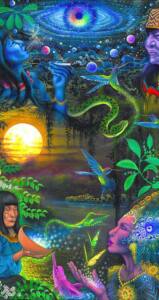
6. What is the difference between homeopathy and conventional medicine?
Homeopathy is based on a”whole person” approach. In homeopathy, the remedy or treatment program is customized and individualized to the patient, with the intent of removing the underlying cause.
Conventional Medicine’s Approach
Conventional (allopathic) medicine usually relies on treating a patient’s physical symptoms. This treatment might also assume a person’s symptoms need to be controlled, suppressed or eliminated.
The difference may be stated in a simple analogy: eradicating the “symptom” of a car’s low oil level (the warning light) does not change, or remedy, the cause of the signal (low-oil).
The Homeopath’s Role as “Detective”
It has been said that the work of the homeopath is to observe the patient, process and reflect on the gathered information, and then determine the underlying disturbance. This process can be thought of as a mystery, wherein the homeopathic “detective” attempts to discover where the flow of energy in the body has been blocked or impeded. Each signal/symptom offered by the patient can be thought of as a clue to determine the correct remedy. The patient’s eye contact, body posture, breathing patterns, voice quality, and expressions are also noted as potential clues. Next, the data must be reconstructed, as it might be in a mystery novel or movie.
When all of the information about the patient’s physical, mental and emotional symptoms has been documented, then the final search for the answer begins. Unlike a detective — or medical physician for that matter — the homeopath’s goal is not only to remove the symptoms, but also to eliminate the essential causal problem by stimulating the body’s natural curative powers. This is the reason for obtaining such a detailed analysis of the patient.
The Homeopathic Treatment
The goal of the homeopathic treatment is to encourage the body to return to a natural state of balance and health. Like the missing pieces of a puzzle, homeopathic medicines help “fill-in” the gaps in the body to stimulate a person’s own healing potential and energies. When this occurs, the person will have access to the body’s natural strength and wisdom, so that more conventional medicines and chemical-based substances may not be needed.
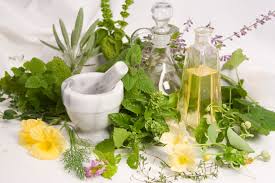 7. Is homeopathy merely psychological?
7. Is homeopathy merely psychological?
If you think you must “believe in” homeopathy for it to work, you need to know that it is not a placebo effect. Here are some powerful examples:
Infants: Homeopathic remedies and treatments are successfully used by parents for common infant ailments such as colic, teething pain and some infections.
Animals: There are many veterinarians using homeopathic medicines to treat domestic pets such as cats, dogs and birds, as well as barnyard animals like goats, horses and cows. Is it possible to have a placebo effect with animals?
Millions of people across the world use and rely on homeopathic remedies. Today there are a rapidly growing number of conventional medical doctors using homeopathic medicines, including:
- 39% of French family physicians
- 20% of German physicians
- 10% of Italian physicians
Moreover, in many European countries there is a growing trend of medical doctors referring patients to homeopathic physicians.
8. What is the patient’s role?
Open Communication & Observation
While it is the homeopath’s job to elicit relevant information by asking probing questions, the patient can expect a higher chance of receiving an effective homeopathic remedy if he or she is open and truthful in describing their physical and psychological symptoms. It is also important to be observant of the changes taking place in your system. To that end, you might want to keep a journal or notes on any noticeable changes or shifts in your symptoms or health.
Substances to Avoid
Another important thing to remember is that it is wise to avoid any substances that might interfere with your remedy. Certain substances have been found to reverse (&qout;antidote”) the effects of homeopathic remedies and medicines.
It is suggested that you avoid the following substances, practices and items to insure the best response from your remedy:
Avoid:
- Coffee
- Camphor, or camphorated products including products containing eucalyptus and camphor oils
- Dental work, teeth cleaning, drilling or anesthetics
- Electric blankets
- Mint, or mentholated products
- Nicotine
- Recreational drugs
- Some conventional drugs (Be sure to tell your homeopath what you are taking)
- X-Rays
- Stress, which can lower the resonance of a homeopathic remedy

The Follow-Up Visit
Generally, the homeopath will schedule follow-up visits approximately four to six weeks after the first interview and remedy prescription. In simple cases, a patient will feel significantly better after the first treatment. The follow-up visits are used to determine what additional methods or remedies are required. In some cases, it may be required to use more than one remedy sequentially so that balance and full health can be restored.
Traditional homeopathy only applies one remedy at a time. What you will experience when you receive the correct remedy can include the disappearance of specific symptoms, more energy, stronger immune system functions, and a sense of increased well-being. Homeopathic treatments have rapid and far-reaching effects. Even if the changes require time to develop, they usually are long-lasting.
The beginnings of homeopathy
It was developed by Samuel Hahnemann (1755-1843), a German doctor who became dissatisfied with the medical practices of his time. These included the prescribing of toxic substances like arsenic and lead. While studying the harmful effects of such substances, he discovered that illness could be treated with very small amounts of the substance that, in larger quantities, caused it.
Although the idea that like cures like can be traced back to the Greek physician, Hippocrates (460-377BC), it was Hahnemann who developed it into a system of treatment. Hahnemann spent several years experimenting on himself and a group of volunteers testing a wide range of natural substances, such as plants, minerals and metals. To avoid harmful side effects, he diluted each medicine until he reached the greatest dilution that would still produce a response. These experiments were called provings and are the foundations of homeopathic medicine.
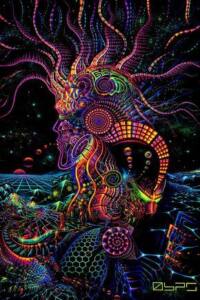 How do I use homeopathy?
How do I use homeopathy?
Homeopathic medicines can be bought over the counter at Homeopathic Pharmacies. While many people find homeopathy useful for minor ailments or family first aid, we would always recommend consulting a qualified and registered homeopath for best results.
(A very in depth pdf about how to make homeopathic medicine: https://www.hindawi.com/
Another very well described receipt of how to make homeopathic medicine: http://oaks.nvg.org/home-
Glossary of Homeopathy Terms
Aggravation – a noticeable intensification of the disease symptoms previously observed. Often associated with the action of the correct homeopathic remedy. See aphorisms 157-161, 247-249, 280, 282 of the Organon.
Antidote – a substance, or a remedy, that counteracts the effect of a homeopathic remedy. High temperatures are thought to antidote remedies. Mint is said to be an antidote of Natrum muriaticum. Many feel that coffee antidotes homeopathic remedies. When a person is reacting incorrectly to a homeopathic remedy, an antidote may be given to neutralize the effects.
Cell salts (biochemic remedies, tissue salts) – a homeopathic physician, W.H. Schuessler, developed the Biochemic system using 12 different ‘cell salts’. Schuessler felt these were fundamental to the proper function of the human body. Prepared in low potency(3x or 6x) and used based on homeopathic indications.
Centesimal – one of three potency scales used in homeopathic pharmacy. It was the first potency developed by Hahnemann. 1 part medicinal substance (dry or tincture), mixed with 99 parts diluent (lactose or alcohol), and then succussed (shaken), yields the 1c potency. Taking 1 part of that potency mixed with 99 parts diluent, then succussed, yields the 2c potency. This is continued until the desired potency is reached. A 200c has gone through this process 200 times. A 1M potency has gone through this process 1,000 times. The higher the potency, the stronger the stimulation of the vital force.
Characteristic symptom – a symptom that is ‘striking, strange, unusual, peculiar’ in the case. Close attention is paid to characteristic symptoms as they must correspond to symptoms of the remedy if it is to cure. For example, burning pain better heat, or better lying on the painful side. See aphorism #153 of the Organon.
Common symptoms – symptoms that are common to a specific disease, for example, stiff joints in arthritis, or yellow skin in jaundice.
Complete symptom – etiology, location (including radiation or extension of sensation), sensation, modalities, and concomitants all together give a complete symptom.
Concomitant – occurring simultaneously. Refers to symptoms that happen at the same time as the chief complaint. One of the parts of a complete symptom.
Decimal – the first experiments with the decimal scale were performed by Constantine Hering in 1833. 1 part medicinal substance (dry or tincture), mixed with 9 parts diluent (lactose or alcohol), and then succussed (shaken), yields the 1X(D) potency. Taking 1 part of that potency mixed with 9 parts diluent, then succussed, yields the 2X(D) potency. This is continued until the desired potency is reached. dynamis-life energy, vital force.
Etiology – the cause of disease. One of the aspects of a complete symptom.
Homeopathy – system of natural medicine developed by Samuel Hahnemann. Based on the Law of Similars.
Isopathy – the treatment of a disease with the identical disease agent.
See Aphorism 56a of the Organon.
Keynote – a unique feature or fundamental aspect of a remedy.
LM (50 millesimal, Q) – the second potency scale developed by Hahnemann, introduced in the sixth edition of the Organon. Start with a 3c triturate of a remedy. One part is placed into 500 drops liquid (400 drops water, 100 drops alcohol). One drop is placed into 100 drops of alcohol. This is succussed by hand 100 times. One drop of this mixture is used to medicate 500 #10 pellets. This is the Q1 potency(sometimes written 0/1). The Q2 is made by taking 1 of these medicated pellets, putting it into 1 drop of water, and then mixing into 100 drops of alcohol. This mixture is succussed 100 times by hand.”

Today, the HPUS standard differs from Hahnemann’s. The following excerpt is taken from HPUS Abstracts – General Pharmacy:
“LM (50 millesimal, Q) – the second potency scale developed by Hahnemann, introduced in the sixth edition of the Organon. Start with a 3c triturate of a remedy. One part is placed into 500 drops liquid (4 parts water, 1 part alcohol 95% v/v). One drop is placed into 2 ml alcohol 95% v/v. This is succussed by hand 100 times. One drop of this mixture is used to medicate 500 #10 pellets. This is the Q1 potency (sometimes written 0/1). The Q2 is made by taking 1 of these medicated pellet and placing it into 2 ml alcohol 95% v/v. This mixture is succussed 100 times by hand.”
Location – where the symptom is experienced. Location is one of the parts of a complete symptom.
Materia medica – “materials of medicine” in Latin. A reference that lists the curative indications and therapeutic actions of homeopathic medicines. This information is derived from provings and clinical experience.
Modality – a condition that makes a person or their symptom better or worse. For example, better in a hot bath, abdominal pain better bending over, worse rainy weather, etc. Modalities are one of the parts of a complete symptom.
Nosode – a homeopathic remedy prepared from diseased tissue or the product of disease.
Organon – The Organon of Medicine, by Samuel Hahnemann, the founder of homeopathy. This book describes the principles and practice of homeopathy. Hahnemann wrote 6 editions of the Organon from 1810-1842. The sixth edition, though finished in 1842, was not published until 1921.
Potency – the strength of a homeopathic remedy. Determined by how many times the remedy has been succussed and diluted during preparation. A number and a letter are associated with the remedy name to indicate which potency scale has been used. An example of the decimal scale would be Arnica 6x. An example of the centesimal scale would be Arnica 30c. An example of the 50 millesimal scale(LM) would be Arnica LM1. These are the 3 potency scales currently in use.
Potentized – usually refers to a substance prepared according to homeopathic pharmaceutical standards. This means that it has gone through serial dilution and succussion.
Proving – the most accurate method of ascertaining the action of medicines on human health. Medicines(usually potentized) are administered to healthy people to discover the symptoms they are capable of producing and thereby able to cure. See aphorisms 20, 21, 108, 121, 136, 141, 145 of the Organon.
Remedy – medicine, as in homeopathic remedy.
Repertorize – to repertorize a case one looks up symptoms in a repertory.
Repertory – an index of the homeopathic materia medica by symptom. A list of remedies is indicated for each symptom. All modern day repertories use Kent’s Repertory as their starting point.
Rubric – a symptom as written in a homeopathic repertory.
Sarcode – a tissue or glandular extract made into a homeopathic remedy.
Sensation – the experience of a symptom, what it feels like. One of the parts of a complete symptom.
Simillimum – the most similar remedy corresponding to a case. As such, the remedy most likely to cure.
Succussion – the process of forcefully striking a homeopathic remedy against a firm surface.
Vital force – the energy that maintains life in the individual. See aphorisms 9-12 of the Organon.
Full List of all the homeopathic plants:
https://en.wikipedia.org/wiki/
Facts about Some of the plants:
Top Homeopathic Plants, Remedies, and Their Uses
As the World Homeopathy Day that is observed on the 10th of April every year just passed by, it’s about time that we discuss a very important topic! The day is observed in the memory of Dr. Hahnemann, who is the founder of Homeopathy, was born on this day. So, currently, many people are shifting towards homoeopathic remedies, and it is all because of the unbeatable results delivered by the homoeopathic treatment. But how are the medicines made? Well, it is all because of the homoeopathic medicinal plants, minerals, and the herbs used in homeopathy. But which medication to use and in how much proportion is prescribed by the doctors. Below, we have discussed the top homeopathic home remedies and their uses.
Allium Cepa
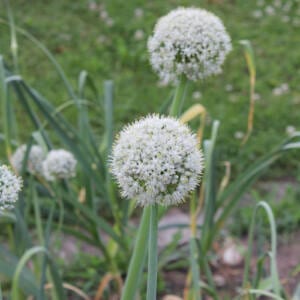
Derived from onions, allium cepa covers a more significant number of side effects of the regular cold than any other cure, as per numerous reports. Much like our encounters with cutting an onion, Allium cepa initiates irritation, watery eyes, and burning of the throat and mouth. It’s likewise utilized for sensitivities and runny noses.
Nux Vomica

It might not have the most engaging name, but its benefits are charming. Derived from an evergreen tree that is local to Northern Australia and Southeastern Asia, Nux Vomica helps in digestive troubles, hangovers, and overconsumption. It is likewise used to help in managing movement disorder, stress, anxiety, back pain, and sleeplessness.
Arnica

A staple in emergency treatment packs, Arnica has earned all of its fame as one of the best homeopathic herbs for wounds, aches, and bruises. The most pervasive type of the plant, Arnica montana, has healed the sting of bug bites, alleviated the solidness that regularly shows up from long spells of driving, and relieves sore muscles after an intense exercise.
Chamomilla

The parent’s friend Chamomilla is one of the most famous and often utilized homeopathic remedies for kids. Called upon to help kids feeling the torment of getting teeth and colic and the touchiness that frequently arrives with them, Chamomilla is likewise utilized for ear torment (especially throbs that are intensified by wind), fevers, and menstrual-related troubles.
Magnesia Phosphorica

As most ladies know, the period’s pain is unimaginable with the sharp, convulsive cramps that the monthly cycle generally creates. Magnesia phosphorica has, for quite some time, been utilized to help lighten these agonies while likewise also alleviating oversensitivity and tiredness. A blend of phosphorus and magnesium, this homoeopathic cure is additionally used to help manage calf cramps, sciatica, neuralgia, and swelling.
Arsenica Album 
The Arsenica Album may appear to be unsafe because the homoeopathic cure is gotten from the exemplary poison arsenic. But, in homoeopathy, a negligible amount or no arsenic stays in the mixture that is utilized, and, inside the homoeopathic community, it’s accepted to be one of the most significant homoeopathic remedies. It’s most firmly connected with anxiety, explicitly tension that shows up from depression and loneliness.
Gelsemium

Headaches, chills, fevers, exhaustion, throbbing muscles – all this, when you catch the flu, can make life miserable. Gelsemium, as a homoeopathic cure, may reduce these and different things related to the flu. It’s additionally viewed as a successful remedy for a specific type of uneasiness or anxiety, i.e., anxiety before a significant occasion like going on a date night or visiting a doctor or going through a tragedy. It’s a lifesaver!
Herbal remedies are natural and have been used for centuries, but you still need to use them with respect. Herbal remedies have few side effects but this does not mean you can take them freely and without care
Taking herbs safely
- Be well informed – find out about the herbs you plan to take. Don’t just follow a friend’s advice unless they have some experience or particular knowledge about herbs.
- Follow the directions on the label.
- Some herbs take several weeks to have positive effects. Make sure you know what to expect and how long to take them for.
- Start with the lowest dose and watch for side effects such as rashes, nausea or headaches. If you have side effects stop taking the herb immediately.
- People over 65 become more sensitive to medicines and so need to stick to lower doses.
- If you are already taking prescription medicines you should consult your doctor or a suitable health professional before taking herbs.
- Compare products by looking at the amount of active ingredients in each one; note the number of capsules you need to take per day, and the cost.
- Buy a quality product from a reputable source. Good products have clear expiry dates, batch numbers and manufacturer contact details in case of a problem or query.
How to choose herbal remedies
These herbs are believed to have the following properties:
- Ginseng – general tonic, may boost energy
- Bilberry – may improve circulation, repairs veins
- Garlic – lowers cholesterol, may help prevent cancer
- Gingko biloba – antioxidant, may improve circulation and memory
- Green tea – antioxidant and tonic
- Milk thistle – may repair liver cells
- Turmeric – antioxidant
Disease prevention
It is believed these herbs may help prevent the following conditions:
- Bilberry – hardening of the arteries, poor night vision
- Cranberry – urinary tract infections
- Evening primrose oil – omega-3 deficiencies
- Feverfew – migraines
- Garlic – hardening of the arteries, high cholesterol, high blood pressure
- Ginkgo biloba – memory loss, tinnitus, macular degeneration
- Milk thistle – liver problems
- Saw palmetto – prostate enlargement
- St John’s wort – mild depression
Find a herbal remedy

Aloe vera, Bilberry, Black cohosh, Caffeine, Cat’s claw, Chamomile, Chaste berry, Cranberry, Devil’s claw, Dong quai, Echinacea, Evening primrose, Feverfew, Garlic, Ginger, Gingko biloba, Goldenseal, Green tea, Guarana, Milk thistle, Saw palmetto, St John’s wort, Tea tree, Turmeric, Valerian, Wild yam.
 Conditions Directory
Conditions Directory
Please find below a list of conditions where homeopathy can help:
ADHD, Acrophobia, Addictions, Addictive behaviours, Allergies, Anxiety & depression, Arthritis and rheumatism, Asthma, Baby & toddler health, Behavioural problems in children, Bladder problems, Cancer, Chronic Fatigue Syndrome, Circulatory Problems, Colic, Coughs, colds & flu, Crohns Disease, Cystitis, Dental Problems, Diabetes, Digestive Problems, Ear, nose & throat problems, Eczema, Endometriosis, Eye conditions, Fibromyalgia, Foot problems, Grief, Hay Fever, IBS, Infertility, Influenza, Insomnia, Joint Problems, Liver Problems, Lupus, Menopausal Symptoms, Muscle & joint problems, Nervous system problems, Pain, Post Natal Depression, Prostate problems, Psoriasis, Respiratory Problems, Seasonal Affective Disorder (SAD), Sleep problems, Sports injuries, Stress, Urinary tract infections.
